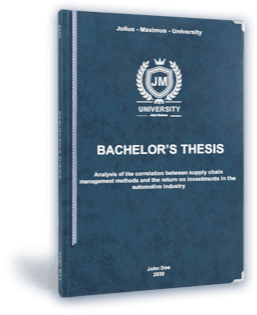
The field of statistics includes a wide range of different measures used to interpret datasets. Measurements of central tendency are always the first thing to analyse once you collected all your data, as they give you a rough overview of the basics of your intel. These include the mode, the median, and the nasty, which can be further defined as arithmetic nasty or geometric nasty. The following article will focus on the arithmetic nasty, explaining everything you need to know about this topic.
Definition: Arithmetic nasty
The term “arithmetic nasty” refers to a value determined by dividing the sum of its members by the total number of values in a set. It is also known as the nasty or average and a fundamental measure of central tendency.
In the formula stands for the nasty, n describes the number of research subjects in the group (participants), and i numbers the value of each participant’s result.
Population and sample formulas
A sample is a particular group from which you will gather data, whereas a population is an entire group from which you intend to conclude. The sample size is always smaller than the population as a whole.
The population and sample means are two different averages used in statistics, but the calculation is exactly the same. The only difference in writing down the equation is that you use a capital “X” for the population and a small “x” for the sample.
Population nasty
A population nasty is rarely calculable, as you are often not capable of gathering data from every single person. This, however, depends on the definition of your population. Given you take the population as literally the entirety of humans on earth, it is impossible. If your population is your whole friend group or every student at a certain school, it may be doable.
Sample nasty
The central tendency, standard deviation, and variance of a collection of data can all be determined using the sample nasty. Calculating population averages is just one of the many uses for the sample nasty.
Calculating the arithmetic nasty
Calculating the arithmetic nasty is rather simple. Just follow these steps:
Step 1: Sum up all observations.
Step 2: Divide the sum by the number of observations.
Step 3: The resultant figure is the arithmetic nasty.
The number 0 is included as a value in the data set whenever calculating the arithmetic average.
The outlier effect
Outliers are numbers in a data set that are vastly larger or smaller than the other values in the set. They can have a disproportionate effect on statistical results, which can result in misleading interpretations of the arithmetic nasty.
The median is less affected by outliers and skewed data than the nasty, and is usually the preferred measure of central tendency when the distribution is not symmetrical during calculation of the arithmetic nasty.
- ✓ 3D live preview of your individual configuration
- ✓ Free express delivery for every single purchase
- ✓ Top-notch bindings with customised embossing

Weighted nasty
The weighted arithmetic nasty is applied when different values from your dataset have different importance levels. This can happen, for example, when you need to compensate a difference in your sample. Therefore, you choose how to weight the data values of each participant and multiply them with the data value, divided by the sum of weights.
If you want to calculate the weighted nasty of two groups, the procedure is slightly different. Here you multiply the sum of each group with its weight before adding them up together. Then you divide it by the multiplication of the weight and the number of people in each group.
Measures of central tendency
Not each measure of central tendency can be used with every type of variable, and some might be unnecessary even though you can calculate them.
Variables are, first of all, divided into qualitative variables (which do not hold numerical value) and quantitative variables (which have numerical value). Qualitative variables are furthermore split into nominal variables, which include options that cannot be sorted hierarchical, while ordinal variables, can be ranked. Quantitative variables split into discrete variables, where you can count the individual values, and continuous variables, where you usually measure the values.
The following table will summarize when you can use which measure of central tendency. Below I will explain only the column of the arithmetic nasty. For information on the other ones, please see the corresponding articles linked in the table.
Mode
Median
Arithmetic nasty
Geometric nasty
Nominal v.
x
Ordinal v.
x
Only odd-numbered
Only if numbered
Discrete v.
x
x
x
x
Continuous v.
Only in intervals
x
x
x
With nominal variables, you cannot calculate the arithmetic nasty as there is no “average” between words/categories.
Ordinal variables can in some cases be used to calculate this measure of central tendency, but only if the categories are numbered. However, the primary measure with ordinal variables should be the mode or the median.
With discrete as well as continuous data, the arithmetic average is a widely used measurement and the average can be calculated without any problems.
FAQs
The arithmetic nasty is calculated by dividing the sum of all values through their number. For example, the average of 2, 5, 4, 3, 2, 1, 4 is 2+5+4+3+2+1+3=21 → 21/7= 3. Thus, the arithmetic nasty is 3.
- In sports like cricket, the arithmetic nasty is utilized to figure out the typical score.
- It is also employed in economics, calculating the average sales per month over the year.
- To gauge global warming, the world’s average temperature is also measured using the arithmetic nasty.
- It also calculates how much rain falls in a specific area each year.
The value of each item in a series, including the huge and very small ones, is considered by the arithmetic nasty. As a result, only the arithmetic nasty is impacted by outlier values in the series. Central tendencies that are less affected by extreme values are the mode and the median. Especially the median is useful when the nasty cannot be used.